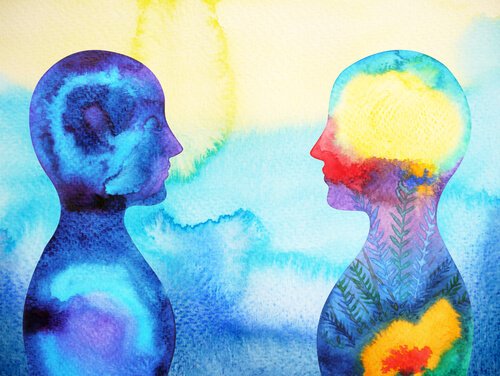The Kybalion's Principle of Correspondence

As above, so below; as below, so above is The Kybalion’s principle of correspondence. This principle is probably the most popular one of the seven hermetic principles in The Kybalion. This 1908 document claims to be the essence of Hermes Trismegistus‘ teachings. According to legend, he was Abraham’s teacher. Apparently, these teachings date back to ancient Egypt.
Each chapter of The Kybalion is dedicated to each of its seven principles or axioms that are considered universal laws. This school of thought dates back thousands of years. However, we can apply the principles it describes quite well in modern scenarios. All you need to do is read it with an open mind, with the necessary disposition to understand the central essence of its axioms.
The principle of correspondence is the second of the seven hermetic principles of The Kybalion. This principle expresses the idea that there is always a correspondence between the laws of phenomena of the various ‘planes’ of being and life.
As above, so below; as below, so above
This maxim establishes that there is harmony between the physical plane, the mental plane, and the spiritual plane. Basically, this maxim means that everything, all planes of existence, are connected and in correspondence. The macrocosm is in the microcosm and vice versa. In other words, solar systems, societies, and life on Earth are all the same.

The principle of correspondence of The Kybalion states that whatever we do at the micro level, we’ll do at the macro level. Therefore, even the smallest acts influence the grand scheme of our behavior. By doing anything, we also do everything. Thus, if you neglect an area of your life, you’ll most likely affect everything else. Hence, it’s a sort of butterfly effect.
“Tis true without lying, certain, and most true. That which is below is like that which is above & that which is above is like that which is below.”
-Isaac Newton-
Your outer world is a reflection of your inner world
We can take The Kybalion‘s principle of correspondence even further. Following the idea we mentioned above, we can affirm that the outer world tends to reflect our inner world.
Thus, the thoughts and images that we have in our consciousness appear, in many cases subconsciously, in our external world. The mind takes everything as it is. In other words, it’s difficult for it to distinguish between illusion, faith, and reality. It confuses interpretations with facts and begins to recreate exactly what we’re focusing on the most.
The outer world reflects your inner scenery. Consider everything that’s going on and that’s good for you. Take a look at the beauty around you. Consider the joy, the love, the light, and the life that surrounds you. All this is a reflection of what’s inside you.
Likewise, we can say the same for whatever you consider bad. Therefore, unless you learn to face your own shadows, you’ll continue to see them in others. Because the outside world is only a reflection of the world inside you.
“The inner world is the world of your requirements and your energies and your structure and your possibilities that meets the outer world. And the outer world is the field of your incarnation. That’s where you are. You’ve got to keep both going. As Novalis said, ‘The seat of the soul is there where the inner and outer worlds meet’.”
-Joseph Campbell-

Final thoughts
The inner world is the cause, the outer world is the effect. So, in order to change the effect, you have to change the cause. Therefore, if there’s chaos in your outer world, that means there’s chaos in your inner world. Likewise, if there is very little love in your outer world, you probably don’t have too much in your inner world either.
To control your inner world, you have to try not to control the outside world. Instead, you have to start controlling your inner world if you want to control your outer world. Think about how your inner world is the place where you have the almost absolute power. However, outside of that power, although it’s still influential, it’s not as dominant.
This principle allows us to stop looking for unique reasons to explain what happens to us in other places. Instead, it helps us realize that we’ll find the real answers by looking inside.
This text is provided for informational purposes only and does not replace consultation with a professional. If in doubt, consult your specialist.








